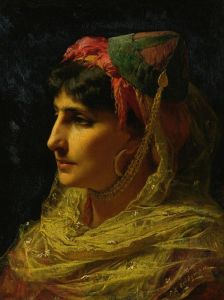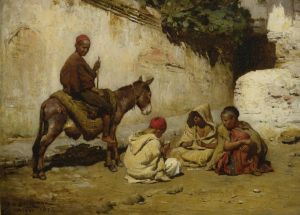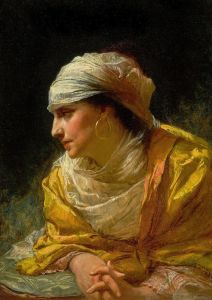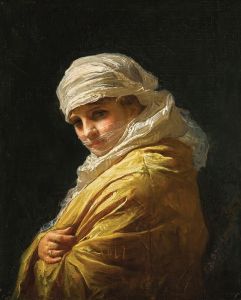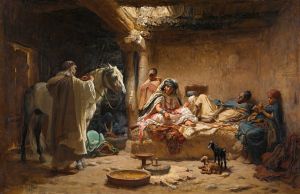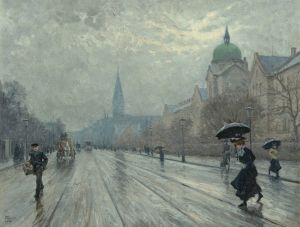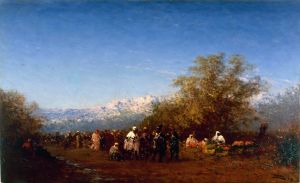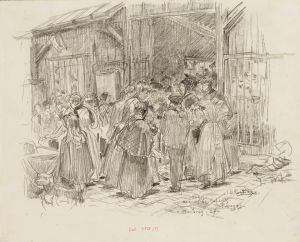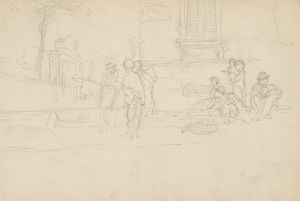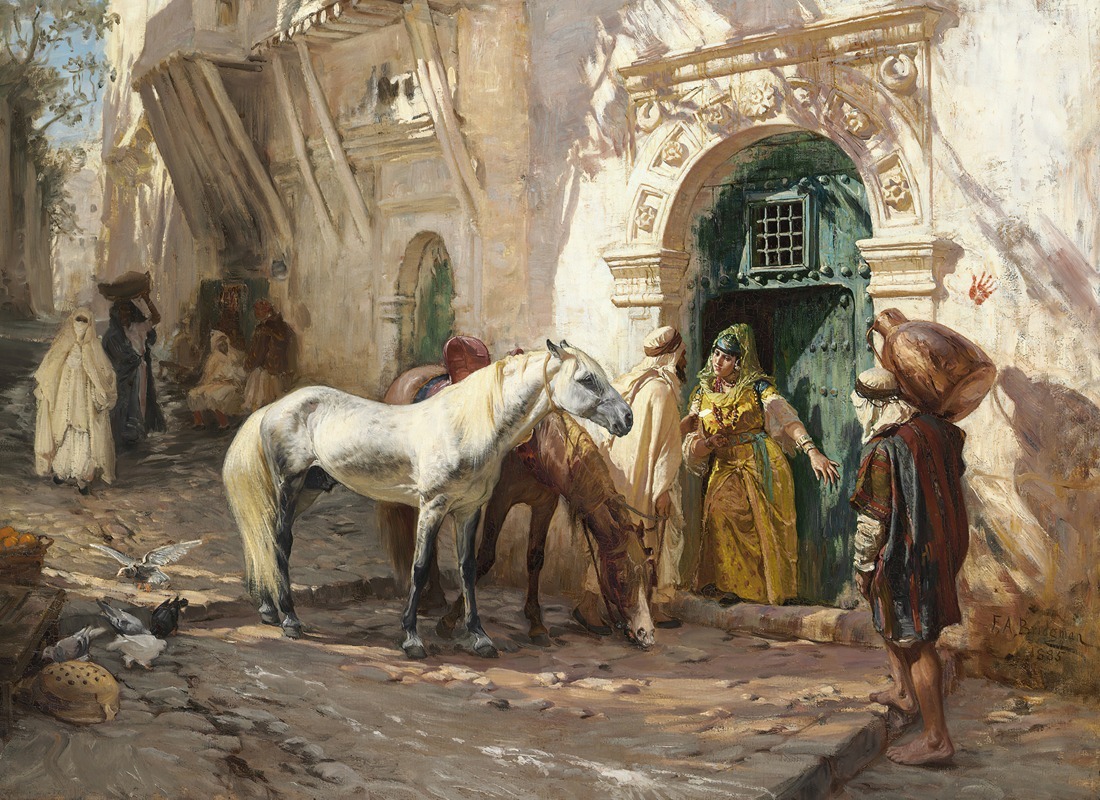
Scène prise au Maroc
A hand-painted replica of Frederick Arthur Bridgman’s masterpiece Scène prise au Maroc, meticulously crafted by professional artists to capture the true essence of the original. Each piece is created with museum-quality canvas and rare mineral pigments, carefully painted by experienced artists with delicate brushstrokes and rich, layered colors to perfectly recreate the texture of the original artwork. Unlike machine-printed reproductions, this hand-painted version brings the painting to life, infused with the artist’s emotions and skill in every stroke. Whether for personal collection or home decoration, it instantly elevates the artistic atmosphere of any space.
"Scène prise au Maroc" is a painting by the American artist Frederick Arthur Bridgman, who was known for his detailed and vivid depictions of Orientalist themes. Bridgman was born in Tuskegee, Alabama, in 1847 and later moved to Paris, where he studied under the renowned artist Jean-Léon Gérôme. Bridgman became one of the most prominent American artists of the 19th century, particularly noted for his works that captured the essence of North African and Middle Eastern cultures.
"Scène prise au Maroc" translates to "Scene taken in Morocco," indicating that the painting depicts a scene from Morocco. Bridgman traveled extensively in North Africa, including Morocco, Egypt, and Algeria, where he gathered inspiration and material for his artworks. His travels allowed him to observe and document the daily lives, customs, and landscapes of the regions he visited, which he then translated into his paintings with great attention to detail and authenticity.
The painting "Scène prise au Maroc" is a testament to Bridgman's skill in capturing the vibrancy and atmosphere of Moroccan life. While specific details about the painting's composition and the exact scene it portrays are not widely documented, it is likely that the work features elements typical of Bridgman's Orientalist style. This style often includes intricate architectural details, richly colored textiles, and carefully rendered figures engaged in everyday activities.
Bridgman's works are characterized by their meticulous attention to detail and their ability to convey a sense of place and time. He was particularly adept at rendering the play of light and shadow, which added depth and realism to his scenes. His paintings often evoke a sense of romanticism and exoticism, which were popular themes in 19th-century European and American art.
"Scène prise au Maroc" would have been created during a period when Orientalism was a dominant trend in Western art. This movement was marked by a fascination with the cultures and landscapes of the Near East and North Africa, often romanticizing and idealizing these regions. Bridgman's work fits within this context, as he sought to bring the beauty and complexity of Moroccan life to a Western audience.
Frederick Arthur Bridgman's contributions to art were significant, and his works continue to be appreciated for their historical and cultural insights. His paintings, including "Scène prise au Maroc," offer a window into the 19th-century Western perception of North Africa and serve as valuable records of the artist's travels and observations.
In summary, "Scène prise au Maroc" by Frederick Arthur Bridgman is a painting that reflects the artist's deep engagement with Moroccan culture and his mastery of the Orientalist style. While specific details about the painting are scarce, it remains an important example of Bridgman's work and his ability to capture the essence of the places he visited.





